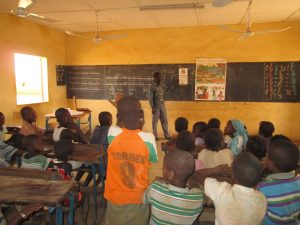
In 2015, the UN adopted the 2030 Agenda on Sustainable Development, a set of goals, known as the Sustainable Development Goals (SDGs), which are a universal call to action to end poverty, protect the planet and improve the lives and prosperity of people around the world.
The SDGs are 17 goals, with specific targets for each one, that were agreed by the world’s leading countries and must be achieved in 15 years. To achieve this set of goals, everyone must do their part: governments, private sector, civil society and individuals.
The Eyes of the world projects are aligned with the 2030 SDGs and aim to move towards a more just and equitable world where the right to health is guaranteed and eye care is accessible to everyone, leaving no one behind.
Informative clip on the link between eye health and the SDGs, produced by the Eyes of the world Foundation with the support of Barcelona Provincial Council.
And that is why the actions of Eyes of the world are:
- Bringing eye care to the most vulnerable population so that people can work, care for their families and look ahead autonomously.
- Integrating ophthalmology services into basic health services, establishing care as an essential part of Universal Health Coverage.
- Providing eye check-ups in schools in the poorest areas to facilitate vision corrections to students and to ensure that all children can follow classes.
- And promoting women’s empowerment individually and collectively in the eye care domain, with the aim of ending gender inequalities in access to health.
Therefore, beyond helping to guarantee the right to health (SDG3), which is the Foundation’s main challenge, the work carried out by Eyes of the world encompasses more objectives linked mainly to the fight against poverty (SDG1), quality education (SDG4) and gender equality (SDG5).
In addition, Eyes of the world works to eliminate neglected tropical diseases, such as trachoma, by promoting basic eye hygiene habits and facilitating access to water for the most vulnerable populations (SDG6), and by building partnerships (SDG17) to achieve these objectives, both at local, national and international level. In this regard, the Foundation is part of the Advisory Council of the International Agency for the Prevention of Blindness (IAPB), which is the global alliance that includes the global eye care. Furthermore, the Foundation collaborates with the health authorities of the different territories in which it has ongoing projects to strengthen local institutions so that they assume eye care in each territory.